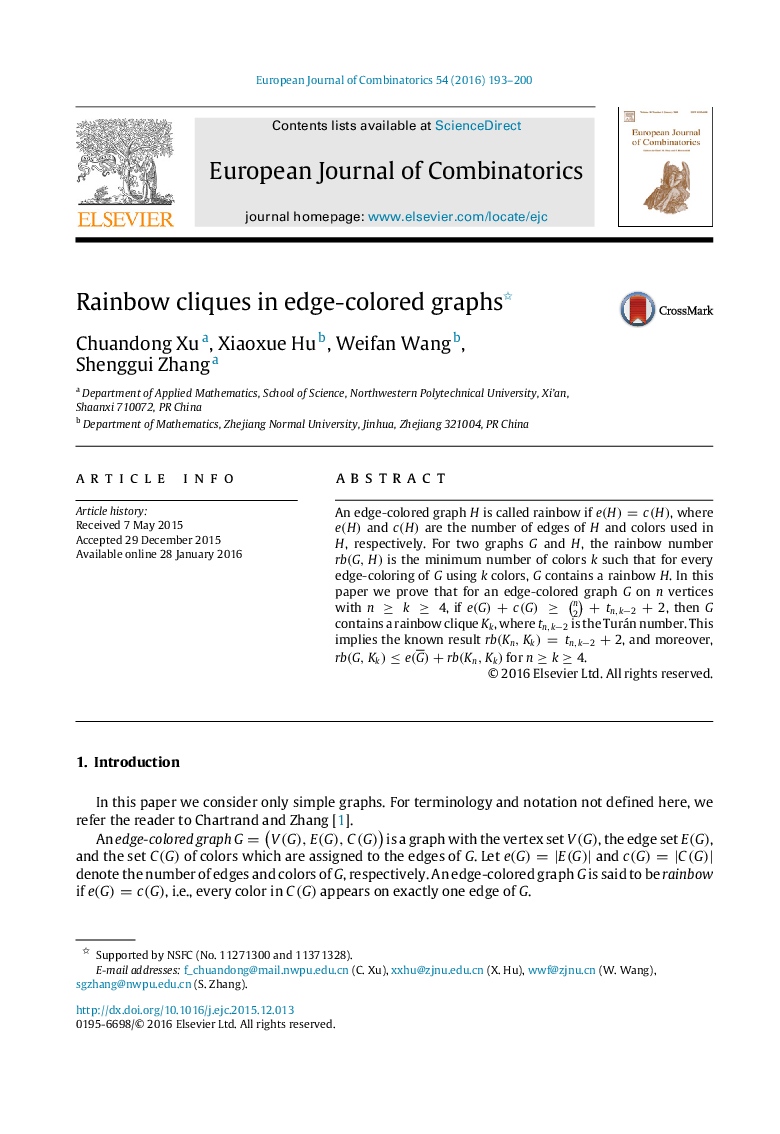| Article ID | Journal | Published Year | Pages | File Type |
|---|---|---|---|---|
| 4653308 | European Journal of Combinatorics | 2016 | 8 Pages |
Abstract
An edge-colored graph HH is called rainbow if e(H)=c(H)e(H)=c(H), where e(H)e(H) and c(H)c(H) are the number of edges of HH and colors used in HH, respectively. For two graphs GG and HH, the rainbow number rb(G,H)rb(G,H) is the minimum number of colors kk such that for every edge-coloring of GG using kk colors, GG contains a rainbow HH. In this paper we prove that for an edge-colored graph GG on nn vertices with n≥k≥4n≥k≥4, if e(G)+c(G)≥(n2)+tn,k−2+2, then GG contains a rainbow clique KkKk, where tn,k−2tn,k−2 is the Turán number. This implies the known result rb(Kn,Kk)=tn,k−2+2rb(Kn,Kk)=tn,k−2+2, and moreover, rb(G,Kk)≤e(G¯)+rb(Kn,Kk) for n≥k≥4n≥k≥4.
Related Topics
Physical Sciences and Engineering
Mathematics
Discrete Mathematics and Combinatorics
Authors
Chuandong Xu, Xiaoxue Hu, Weifan Wang, Shenggui Zhang,
